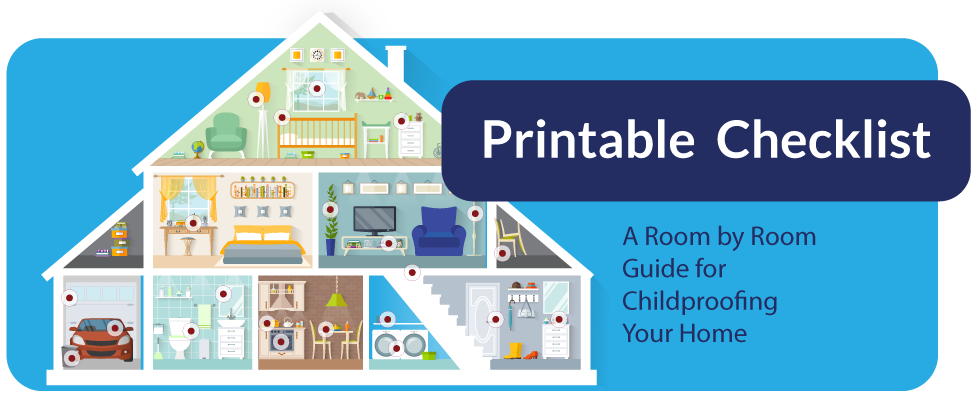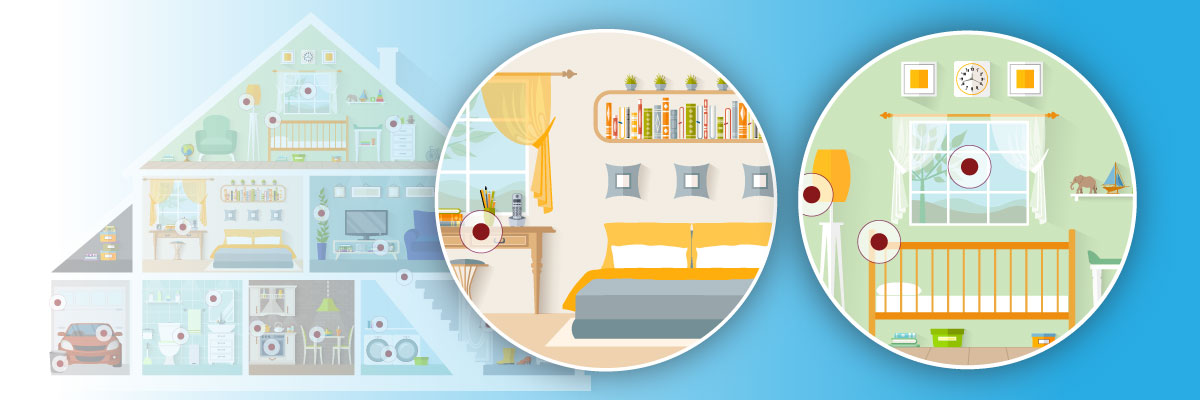Article at-a-glance
- Ensuring furniture and equipment meets safety standards is an important step for childproofing your child’s room.
- Scanning your bedrooms for choking hazards and moving them out of reach can help protect your child.
- Securing medicine and firearms is an essential part of childproofing your home.
Most accidents, like most tantrums, can be prevented with some forethought and creativity. With this thought in mind, childproofing your home must be an ongoing routine to keep your youngster safe. This article will cover the bedrooms – your child’s room and your own.
Child’s Bedroom
- The most important precaution in a child’s bedroom is to use furniture and equipment that meets safety standards. Inherited cribs and repurposed furniture may be appropriate.

- Falling from a bedroom window will cause a serious injury (even death from an upper floor). Make sure all windows are closed and locked when not supervised. Window guards can be purchased and installed, only allowing a window to be opened a few inches. Some even provide extra netting across this opening when the window is in use.
- Keep the crib away from mini blinds or draperies to avoid accidental cord strangulation. Also, keep lamps and cords away from beds and cribs to prevent burns.
- Crib slats should be no more than 2 3/8-inches (6cm) apart.
- The mattress should fit snugly against the frame of the crib. There should be no more than two fingers width between the mattress and slats.
- Make sure all bolts and screws are tightened for any bed or other furniture.
- The lowest edge of anything hanging on the walls should be well above your child’s reach.
- Secure all bookshelves, dressers, and cabinets to the wall to prevent them from falling over. Even children who cannot walk yet may have surprising climbing skills.
- Cover all electrical outlets with plastic guards.
- If you have a wooden toy box – it’s best if the lid is removed or hinged and not able to be locked.
- Toys should be age-appropriate and contain no small pieces that can be swallowed. Anything that fits inside a cardboard toilet tube is considered a choking hazard.
- Beware of button batteries – they are extremely dangerous.
- Keep piggy banks out of reach or—better yet—out of a child’s bedroom. Coins are choking hazards.
Parent’s Bedroom
- Keep the door closed or install a child-proof gate across the opening. For todders, a doorknob cover or highly positioned door hasp may be a better bet. As a stop-gap solution for visiting children, try slipping a sock over the door knob and securing with a rubber band.
- No medications or poisonous substances should be left where a child can obtain them. This also goes for purses or emptying your pocket onto any surface in a child’s reach.
- Store all firearms unloaded and locked into a cabinet or safe. Ammunition should be stored in a different location away from guns.
- Make sure you have installed smoke and carbon monoxide detectors in ALL bedrooms or at least on all levels of your home. Test devices frequently and change batteries twice a year.
- Keep dry-cleaning bags or any plastic bag away from children. Plastics can cause suffocation if placed over the head of a child.
For more tips on childproofing your home, visit the other posts in our series:
Childproofing the Kitchen and Bathroom
Childproofing Your Living Space and Laundry Room
Childproofing the Garage, Storage Areas, and Yard
Save
Save
Share this article:

